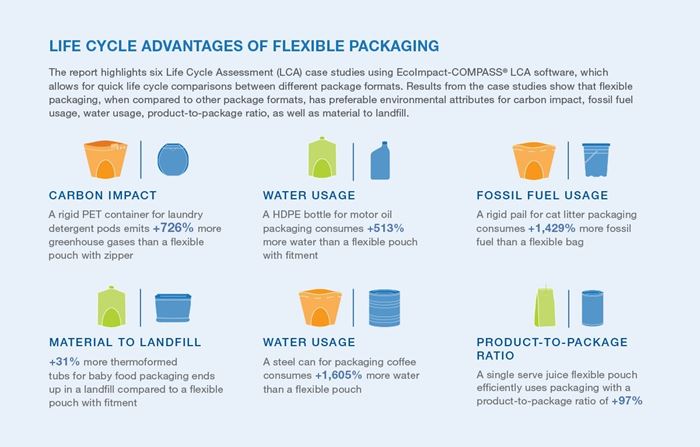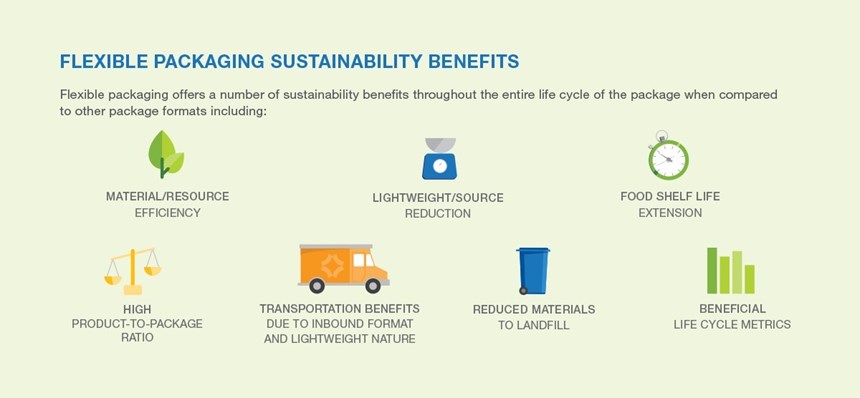Highly-Visual Fact Sheet Shows the Life Cycle Advantages of Flexible Packaging
Based on its recent study, the Flexible Packaging Association’s fact sheet details the environmental attributes of six different flexible packaging formats.
The Flexible Packaging Association (FPA) has developed a highly-visual fact sheet on the life cycle advantages of flexible packaging. The fact sheet is based on the recent report “A Holistic View of the Role of Flexible Packaging in a Sustainable World” prepared for FPA by Todd Bukowski and Michael Richmond, of business and technology management company PTIS, LLC.
The new report details the preferable environmental attributes of flexible packaging for six different package formats, and the industry’s efforts to address end-of-life challenges. The six package formats evaluated are: single-serve juice, coffee, baby food, laundry detergent, and motor oil.
Results of the life cycle comparison revealed in the report include:
- A steel can for packaging coffee consumes +1605% more water than a flexible pouch.
- A rigid PET container for laundry detergent pods emits +726% more greenhouse gases than a flexible pouch.
- +31% more thermoformed tubs for baby food packaging end up in landfill compared to a flexible pouch.
Related Content
-
How to Extrusion Blow Mold PHA/PLA Blends
You need to pay attention to the inherent characteristics of biopolymers PHA/PLA materials when setting process parameters to realize better and more consistent outcomes.
-
Medical Molder, Moldmaker Embraces Continuous Improvement
True to the adjective in its name, Dynamic Group has been characterized by constant change, activity and progress over its nearly five decades as a medical molder and moldmaker.
-
Foam-Core Multilayer Blow Molding: How It’s Done
Learn here how to take advantage of new lightweighting and recycle utilization opportunities in consumer packaging, thanks to a collaboration of leaders in microcellular foaming and multilayer head design.














